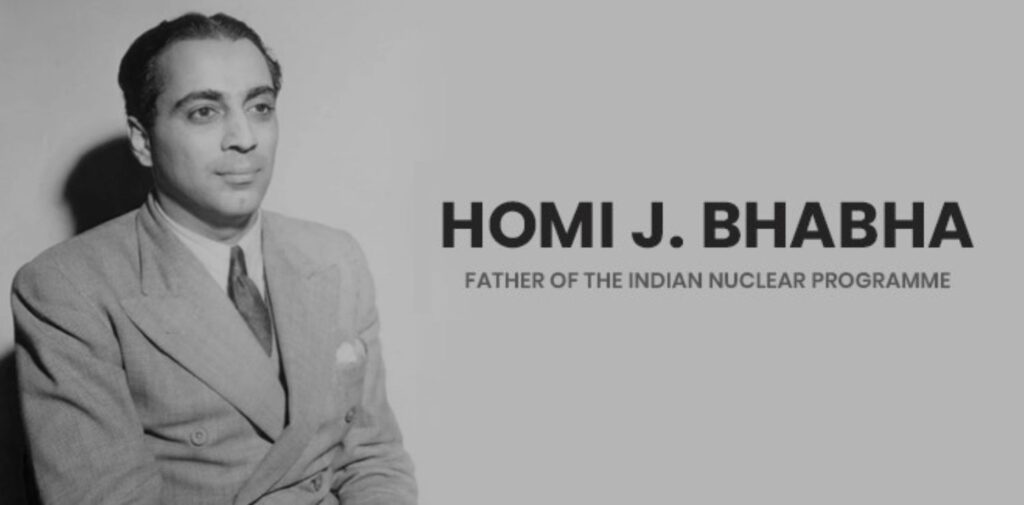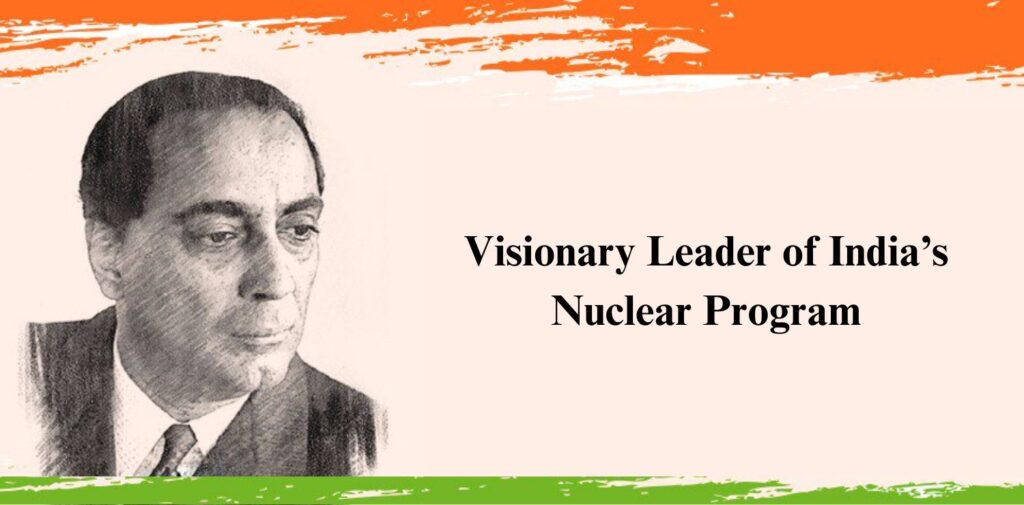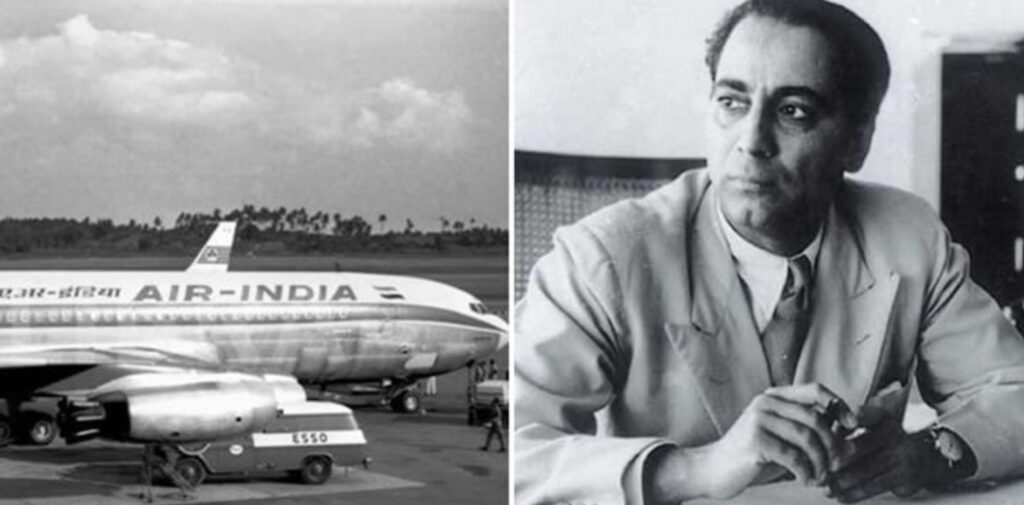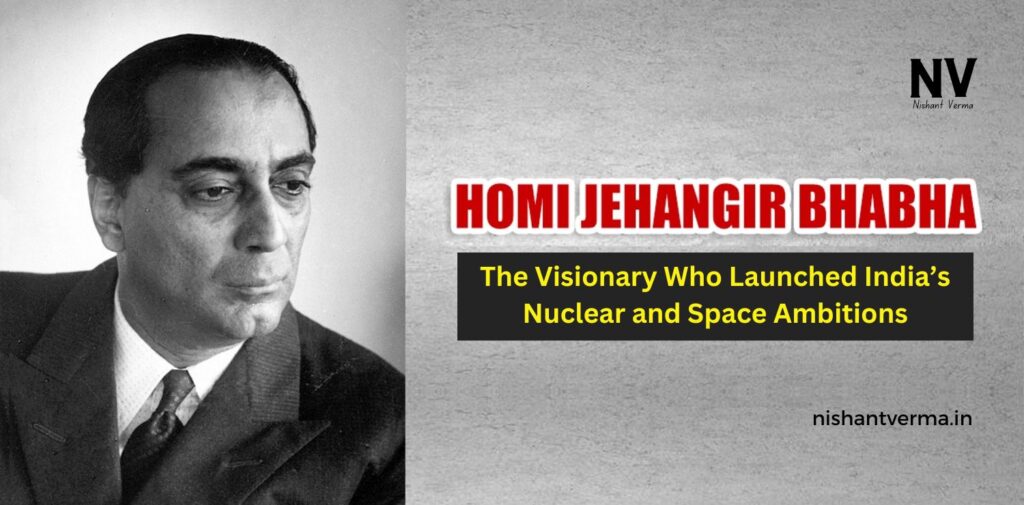Dr. Homi Jehangir Bhabha, often referred to as the “Father of the Indian Nuclear Program,” was a visionary scientist whose contributions have had an everlasting impact on India’s scientific landscape. Known for his pioneering work in nuclear physics and space research, Bhabha’s legacy continues to inspire generations of scientists, engineers, and innovators worldwide.
In this detailed article, we will explore the life, achievements, and enduring influence of Dr. Homi Bhabha, whose work laid the foundation for India’s nuclear and space programs.
Early Life of Dr. Homi Jehangir Bhabha: A Spark of Genius
Dr. Homi Jehangir Bhabha was born on October 30, 1909, in Mumbai (then Bombay), into a wealthy and influential Parsi family. His father, Jehangir Bhabha, was a successful lawyer, and his mother, Meherbai, was a highly educated woman who encouraged his intellectual curiosity. Growing up in such a nurturing environment, Homi showed an early inclination toward the sciences, especially physics and mathematics.
At the age of 15, he went to Cambridge University in England to pursue his studies. He graduated with a First Class degree in mechanical engineering from the Elphinstone College in Bombay. However, Homi’s passion for physics led him to change his academic focus. He decided to pursue a career in theoretical physics, leading him to the Cavendish Laboratory at Cambridge, one of the leading centres for physics research.
During his time at Cambridge, Bhabha worked under the guidance of Niels Bohr and Paul Dirac, two of the most prominent figures in the field of quantum mechanics. It was during these formative years that Bhabha’s understanding of nuclear physics began to take shape, which would later define his legacy in India’s nuclear and space research programs.

Early Career: A Vision for India
While Bhabha was building his career in Europe, India was still under British colonial rule. He was deeply aware of the challenges his country faced in terms of scientific and technological advancements. Bhabha’s vision was clear: he believed that India needed to develop its scientific infrastructure to become a self-reliant and technologically advanced nation.
In 1939, as the Second World War intensified, Bhabha returned to India, and it was at this time that his career took a significant turn. He began working at the Indian Institute of Science (IISc) in Bangalore, under the guidance of Nobel laureate C. V. Raman, the famed Indian physicist. At IISc, he began to establish his research work in nuclear physics.
During this period, Bhabha developed a deep interest in cosmic rays and their interactions with matter. He proposed a theory of their interaction with atoms, which later became known as the Bhabha scattering theory. This was an important breakthrough in the field of quantum electrodynamics.
Bhabha’s fame as a physicist grew rapidly, and he was soon invited to attend international physics conferences. However, it was not just his scientific genius that caught the attention of people, but his ability to visualize India’s potential in the field of nuclear and space research.
The Visionary Leader of India’s Nuclear Program
In 1945, as India was inching closer to independence, Bhabha’s vision began to take shape. He proposed the idea of establishing a nuclear research centre in India, which would focus on harnessing nuclear energy for peaceful purposes and making India self-reliant in the field of nuclear technology. His advocacy was instrumental in the creation of the Tata Institute of Fundamental Research (TIFR) in Mumbai in 1945, which became the cornerstone of India’s nuclear program.
In 1948, the Indian government, under the leadership of Prime Minister Jawaharlal Nehru, recognized the importance of nuclear research for national development. Nehru appointed Bhabha as the Director of the Atomic Energy Commission (AEC). Bhabha, who had already made significant contributions to nuclear research, was tasked with leading the country’s atomic energy program.
Bhabha’s vision was not just limited to energy generation. He foresaw the potential of nuclear research in space exploration and defence as well. He played a key role in laying the foundation for India’s nuclear weapons program, although his primary focus remained on peaceful uses of nuclear energy. Under his leadership, India initiated its first nuclear reactor program at the Tata Institute of Fundamental Research and the Bhabha Atomic Research Centre (BARC) was set up in 1954 in Mumbai, which continues to be India’s premier nuclear research institution.

Space Research: The Rocket Boy of India
Dr. Bhabha’s influence extended beyond nuclear physics. He recognized the importance of space research in the context of India’s future and took early steps to encourage the development of space technology. In the 1950s, he helped establish India’s space program by advocating for a national space agency.
Bhabha’s vision for space research was aimed at using rockets to explore space and for remote sensing, which would help in areas like agriculture, weather forecasting, and defence. Although the Indian National Committee for Space Research (INCOSPAR) was established in 1962 after his death, Bhabha was the driving force behind the initial steps to explore the possibility of space technology in India.
He also emphasized the need for India to develop Indigenous satellite technology, and his work laid the foundation for the later Indian Space Research Organisation (ISRO), founded by Dr. Vikram Sarabhai, who considered Bhabha his mentor.
The Tragic Death of a Visionary
In a tragic twist of fate, Dr. Homi Bhabha passed away on January 24, 1966, in a plane crash near Mont Blanc, France. He was en route to Vienna to attend an international conference. His untimely death at the age of 56 shocked the world, and India lost one of its most brilliant minds at a critical juncture in its scientific development.
Bhabha’s passing left a void in India’s nuclear and space programs, but his legacy continued through the institutions and research programs he had initiated. The Bhabha Atomic Research Centre (BARC) and Tata Institute of Fundamental Research (TIFR), both of which were instrumental in the early stages of India’s nuclear and space research, have continued to carry forward his work.

Legacy: India’s Nuclear and Space Programs
Dr. Homi Bhabha’s contributions to India’s nuclear and space programs are immeasurable. He was not just a scientist; he was a visionary who understood the importance of science and technology for national development. Today, India is one of the leading countries in the world in the fields of nuclear energy and space research, and much of this can be attributed to Bhabha’s foresight and tireless efforts.
- Nuclear Power: India’s nuclear power program, which began under Bhabha’s leadership, has expanded over the decades. The country now operates several nuclear reactors and has become self-sufficient in its nuclear energy production.
- Space Exploration: Although Bhabha did not live to see it, India’s space program has flourished. The establishment of ISRO and the successful launches of satellites like Chandrayaan and Mangalyaan reflect his foresight in pushing for space exploration as a critical area of research.
- Scientific Institutions: Bhabha’s work led to the establishment of world-class institutions like TIFR and BARC, which continue to be at the forefront of research in physics, nuclear energy, and space science in India.
Conclusion: The Rocket Boy’s Legacy
Dr Homi Jehangir Bhabha’s contributions to science, technology, and national development have made him one of the most revered figures in India’s history. His work in nuclear physics and space research not only helped India emerge as a self-reliant nation but also set the stage for India’s future scientific and technological achievements.
Dr. Bhabha’s story is one of brilliance, vision, and dedication. Despite his untimely death, his vision lives on, and his work continues to shape the direction of India’s scientific progress. From nuclear energy to space exploration, Dr. Bhabha, the Rocket Boy of India, remains a towering figure in the world of science and a symbol of India’s ambitions to lead in the global technological race.
By learning about the life and work of Dr Homi Jehangir Bhabha, we not only honour his memory but also acknowledge the incredible impact of his contributions to science, which continue to influence India and the world.




